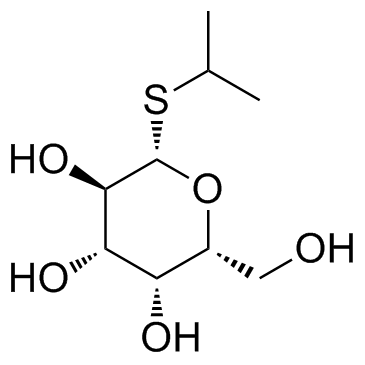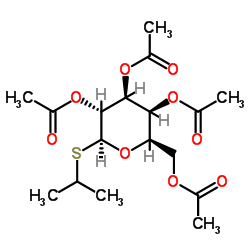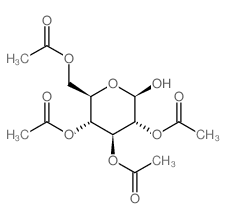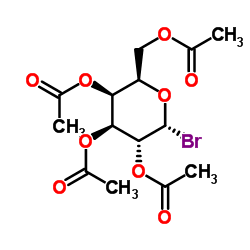367-93-1
| Name | isopropyl β-D-thiogalactopyranoside |
|---|---|
| Synonyms |
MFCD00063273
isopropyl beta-D-thiogalactopyranoside Isopropyl-b-D-thiogalactopyranoside UNII-X73VV2246B (2R,3R,4S,5R,6S)-2-(hydroxymethyl)-6-propan-2-ylsulfanyloxane-3,4,5-triol Isopropyl β-D-1-thiogalactopyranoside propan-2-yl 1-thio-β-D-galactopyranoside Isopropyl 1-thio-b-D-galactopyranoside Isopropyl-β-D-thiogalactoside Isopropyl β-D-thiogalactoside 1-Methylethyl 1-thio-β-D-galactopyranoside Isopropyl β-D-thiogalactopyranoside Isopropyl-beta-D-thiogalactopyranoside Isopropyl 1-thio-β-D-galactopyranoside Isopropyl-β-D-thiogalactopyranoside EINECS 206-703-0 β-D-Galactopyranoside, 1-methylethyl 1-thio- Isopropyl β-D-thiogalactoside (IPTG) IPTG 1-(Isopropylthio)-β-Galactopyranside |
| Description | IPTG is a molecular mimic of allolactose, a lactose metabolite that triggers transcription of the lac operon, and it is therefore used to induce protein expression where the gene is under the control of the lac operator. |
|---|---|
| Related Catalog | |
| In Vitro | IPTG uptake by E. coli can be independent of the action of lactose permease, since other transport pathways are also involved. At low concentration, IPTG enters cells through lactose permease, but at high concentrations (typically used for protein induction), IPTG can enter the cells independently of lactose permease[1]. |
| References |
| Density | 1.4±0.1 g/cm3 |
|---|---|
| Boiling Point | 438.4±45.0 °C at 760 mmHg |
| Melting Point | 105 °C |
| Molecular Formula | C9H18O5S |
| Molecular Weight | 238.301 |
| Flash Point | 218.9±28.7 °C |
| Exact Mass | 238.087494 |
| PSA | 115.45000 |
| LogP | -1.01 |
| Vapour Pressure | 0.0±2.4 mmHg at 25°C |
| Index of Refraction | 1.578 |
| Water Solubility | soluble |
| Symbol |


GHS07, GHS08 |
|---|---|
| Signal Word | Warning |
| Hazard Statements | H319-H351 |
| Precautionary Statements | P281-P305 + P351 + P338 |
| Personal Protective Equipment | Eyeshields;Gloves;half-mask respirator (US);multi-purpose combination respirator cartridge (US) |
| Hazard Codes | Xn:Harmful |
| Risk Phrases | R19;R40;R66 |
| Safety Phrases | S23-S24/25-S36/37-S22 |
| RIDADR | NONH for all modes of transport |
| WGK Germany | 3 |
| HS Code | 2932999099 |
|
~89% 
367-93-1 |
| Literature: Schmidt, Richard R.; Stumpp, Michael Liebigs Annalen der Chemie, 1983 , # 7 p. 1249 - 1256 |
|
~% 
367-93-1 |
| Literature: Li, Aixiao; Kong, Fanzuo Bioorganic and Medicinal Chemistry, 2005 , vol. 13, # 3 p. 839 - 853 |
|
~% 
367-93-1 |
| Literature: Thiem, Joachim; Wiesner, Matthias Carbohydrate Research, 1993 , vol. 249, # 1 p. 197 - 206 |
|
~% 
367-93-1 |
| Literature: Schmidt, Richard R.; Stumpp, Michael Liebigs Annalen der Chemie, 1983 , # 7 p. 1249 - 1256 |
|
~% 
367-93-1 |
| Literature: Helferich; Tuerk Chemische Berichte, 1956 , vol. 89, p. 2215,2218 |
| Precursor 5 | |
|---|---|
| DownStream 0 | |
| HS Code | 2932999099 |
|---|---|
| Summary | 2932999099. other heterocyclic compounds with oxygen hetero-atom(s) only. VAT:17.0%. Tax rebate rate:13.0%. . MFN tariff:6.5%. General tariff:20.0% |






